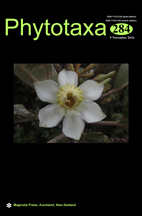Abstract
Adenocalymma, with approximately 75 species, is one of the largest genera from tribe Bignonieae (Bignoniaceae). The genus mostly includes yellow-flowered lianas and shrubs that are conspicuous components of the dry and wet Neotropical forests. As part of an ongoing taxonomic and phylogenetic study of this group, we found unusual materials that do not match any of the currently recognized taxa. These materials formed the basis of two new species described here, which are endemic from the Brazilian Atlantic forest: Adenocalymma lineare, and Adenocalymma apetiolatum. Adenocalymma lineare resembles Adenocalymma nervosum on the linear leaflets, but differs in the habit, prophyll morphology, leaflet venation, floral bracts, bracteole morphology and dimensions, corolla color and morphology, anther and stigma position. While Adenocalymma apetiolatum closely resembles Adenocalymma sessile and Adenocalymma subsessilifolium on the sessile leaf insertion and shrubby habit, it differs from both species by the corolla color, indument type and color. Apart from that, Adenocalymma apetiolatum differs from the former by the prophyll morphology, floral bract and bracteole morphology, and the latter by the corolla morphology. These two new taxa are illustrated, and distribution maps are provided here. Notes on the taxonomy, geographic distribution, habitat, and conservation status are also included.

